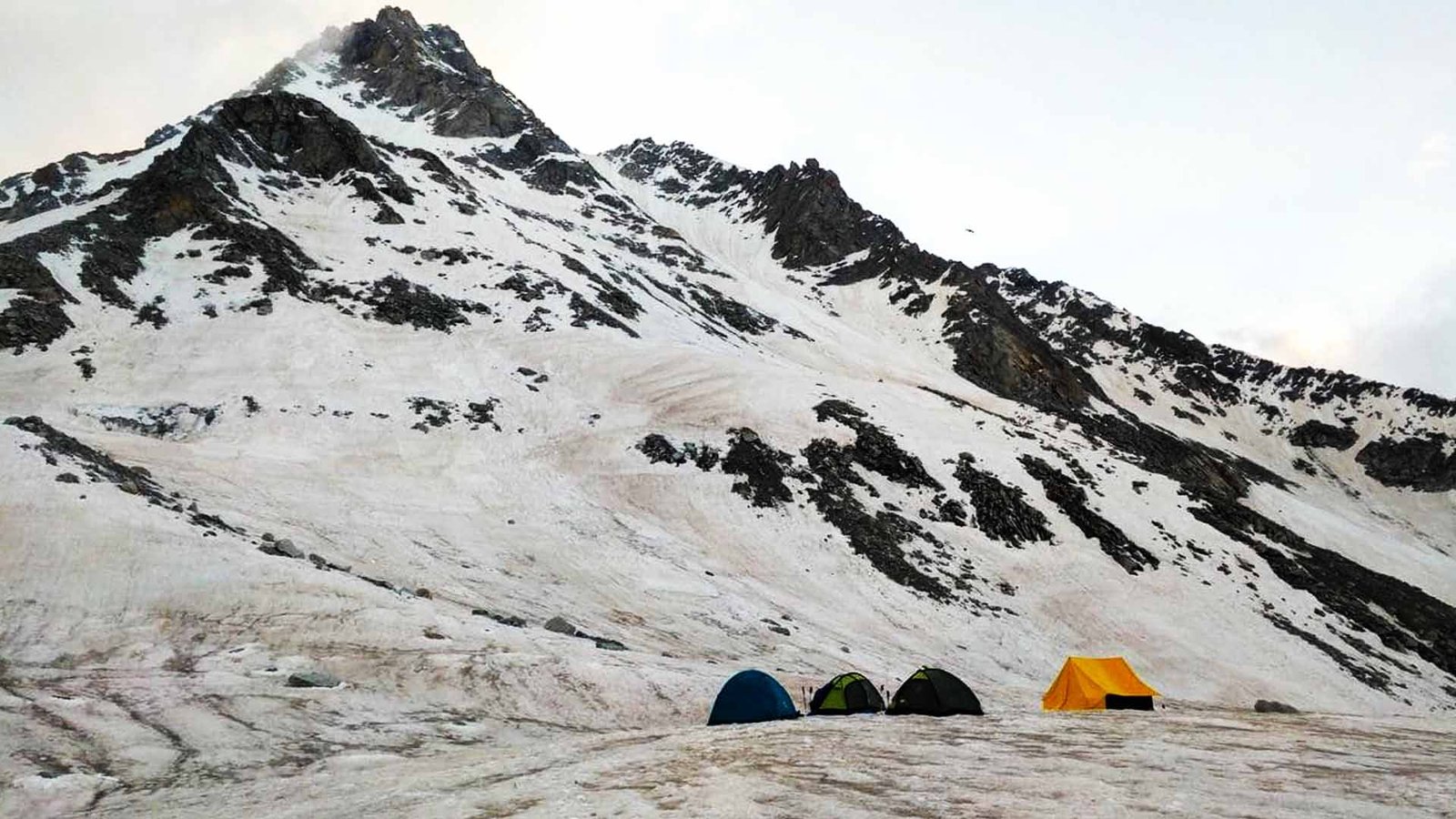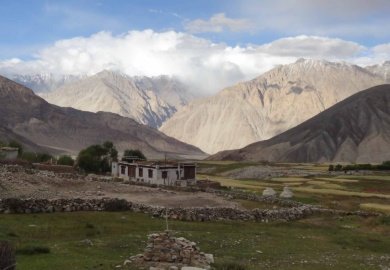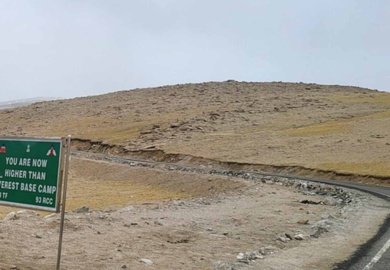Remember the Borasu Pass Trek? That long, winding trail that stretches from Sankri all the way to Chitkul.
Some journeys barely hiss before they shout, while others sneak up on you dressed like a rumor. Borasu never earned a slick magazine spread or even a buzz on Instagram. The name bubbled up one quiet morning, dropped by a forest guard sifting through logs at the Uttarkashi base camp. Ever walked from Har Ki Dun to Chitkul on foot? he asked, blinking like the answer should be obvious.
Truth is, I had never heard of such a route. That uncertainty hooked me faster than any glossy poster. No brochures, no camera crews, just a slender ribbon of frost, rock, and perfect quiet stitching Uttarakhand to Himachal.
Sankri-Taluka-Osla sounded ordinary enough when I jotted it in my notebook.
Ordinary, of course, never arrives in the Himalayas. Three swollen packs, a zipper that quit mid-complaint, and a delayed bus later, the walk had already begun. That first slog to Taluka felt like a warm-up waltz, deodars clapping overhead, rivers gossiping alongside us, dependable like yesterday. The road from Taluka to Osla spreads out like an old, faded map. Villages blur in the rearview, the routers all tuck themselves away, and suddenly the buzzing in my ears settles down to nothing. Push on into Osla and an old fellow grin at you out of nowhere, his beard white as the cloud. He drops a casual line that rattles around my skull for days: The road will change you. Just listen when it does.
Har Ki Dun-Legend Has It “The Valley Swallowed a God”
People talk about Har Ki Dun the way kids pass around shiny postcards-soft grass, gnarly peaks, sunrises on fire. It lives up the hype, trouble is it vibes oddly quiet once the selfies are done. Most backpackers hit the flat glades, snap proof they carried a rucksack and bail. Beyond that, the footpath flirts with permits, flirts with skill, then mostly people just quit because the crowd called it a day. We shrugged and kept plodding. Meadows rip themselves open into scree, air slices sharper than a lunch knife, each inhale turns into a slightly desperate bribe for oxygen. Somewhere past the final outhouse, farther than the last stack of wood, farther than any sign that might say stop, we stumbled into sheet-white snowfields and kept walking.
Borasu Base- The World Narrows
We climbed higher, and the world shrank to little more than blue sky, jagged ice, and the crunch of snow under our boots. There were no trees, no birds, just the endless whisper of wind mixed with the gear-laden creaks of our packs. Borasu Base isn’t really a spot you read about in travel brochures; it’s a wind-scoured tabletop of moraine where tents line up like toy soldiers or flop over if the gusts hit first. That night the stars stayed sharp and close, but the cold turned our sleeping bags into soggy napkins. At one point the still-ness was so loud it pried me awake like a bell. I slid the tent zipper open around midnight and the Milky Way spilled out like spilled milk on black linoleum. I blinked and felt icy tears slide down my cheeks-a mix of wonder and plain freeze.
The Pass – One Step at a Time, and Then Again
Before dawn broke, we edged toward Borasu Pass with headlamps blinking like lost fireflies. Our guide went ahead, heel-stepping a makeshift ladder into the snow so the rest of us had flat rungs instead of slips. Nobody talked; it wasn’t just tired mouths, the mountain kept the chatter politely zipped. A high-altitude pass feels like you’re walking straight along the rim of a big, open breath. The ground seems to hang beneath you, and your head spins in slow motion while your feet do their own thing. Up at the summit-five thousand five hundred and change-millimeters above sea level, nobody flailed their arms.
No fist pumps, no whoops, not even a nervous laugh. The quite pressed so hard, even the wind decided to hush for a minute. One side yawns into the white-lined bowl of Har Ki Dun. The other flings up Kinnaurs sharp-edged spires, a valley that looks ready to swallow tired legs whole. Downward songs are complicated, and this one hit a sour note. Shins squeaked, trekking poles vanished without warning, and every step begged a polite favor from gravity. Yet inch by inch life drifted back into focus. A glassy trickle of ice-water here, a sun-flecked rock licked in green moss there.
Pine whiffs cut the air first, then a faint ribbon of smoke followed the trees like an answer to the mountains silence. Chitkul-tiny, stubborn, beautiful-appeared at the bottom of the trail as if wed summoned it. Walking to Indias last village on the Indo-Tibetan map feels sized to fit only two boots and a pair of screaming calves. Roadless, engine-less, just skin and salt and plain old footfall.
We knocked on Lobsangs door, and she grinned as though the weather owed her nothing at all. Her tea breathed steam that curled up like friendly fog, and her smile never budged. That night I snored for thirteen solid hours. Not a flicker of a dream. Just sleep.
Why This Trail Stays With Me
Borasu isn’t about fire-quick thrills. You won-t find a bungee line or a hashtag-perfect ledge up there. There-s no tent to toast you at the summit. No selfie trophies. The climb isn’t social media proof. Instead, it’s the kind of weight you suddenly realize you’ve been carrying long after your boots come off.
What lingers is the hush. The mountain families who step over the same rocks every dawn because, honestly, they must. That stillness puts every petty worry in the world into a toy model. Patience got hammered into me on those slopes. Focus tighter than I’d ever sensed. Resilience showed up like an old friend who finally makes sense, even if you don-t say its name aloud.
Would I Recommend It?
Absolutely, but- Borasu isn’t a walk in sneakers. Acclimatization, a licensed guide, heavyweight gear, and serious lungs are non-negotiable. Once you cross Har Ki Dun, rescue gets fancy. Phone bars vanish, deadlines disappear, and the only way out is to keep moving. If you are game, the trail hands you two treasures: A journey almost no one can post about, and a silence so thick it will bounce around in your heart long after you are back on city sidewalks.
Vagabond Log
Sankri slides into Taluka, then Osla and on to the flat belly of Har Ki Dun. From there the path lunges toward Borasu Base and spills downhill into Chitkul. Best months are the warm fingers of May-June and the pin-drop quiet of September-October. Peak winter shows no mercy, so leave it to the pros. You’ll chew through eight to ten days, maybe a little more if rain turns the trail to soup. High point hovers around 5,450 meters.
Grade sits at Difficult- not because the steps are steep but because help is far away. Forest Department and Inner Line paperwork are must-haves. A local guide? Absolutely nobody should try this solo.
Pack Smart
Base layer should hug you like a second skin; merino wool under synthetic down and a shell that laughs at rain. Water gurgling from melt stream looks clean but boils or filters anyway. Carry almonds, jaggery bites, and a pocketful of energy bars for quick fire energy.
Spend a lazy day in Har Ki Dun letting lungs stretch, then creep upward. Trekking poles, headlamp, spare gloves, and microspikes ride shotgun.
Last Thought
Some trails you walk just to brag; others slide inside you and scratch an itch deep down. Borasu Pass doesn’t shout; it hums like a tuning fork. Bring ears wide open because that quiet might actually talk back.




